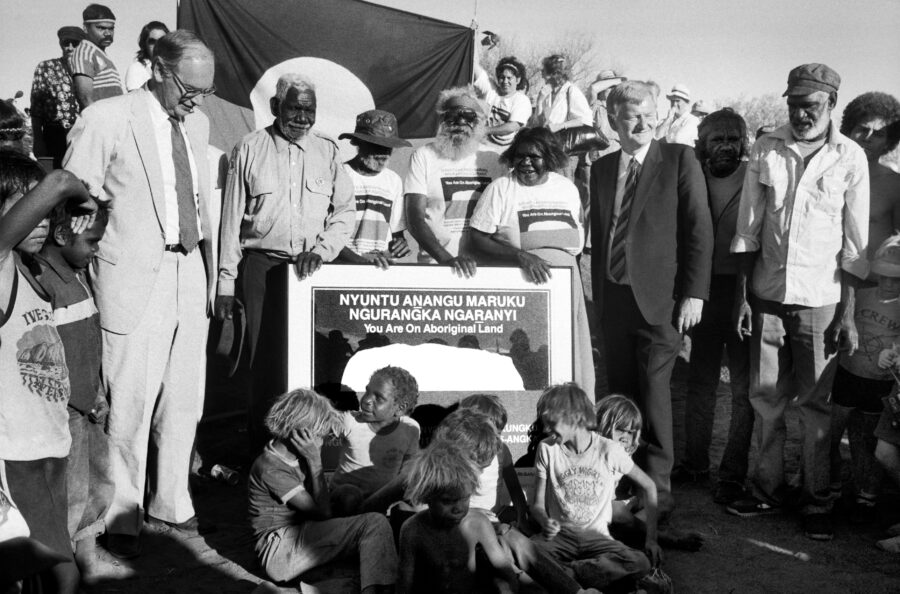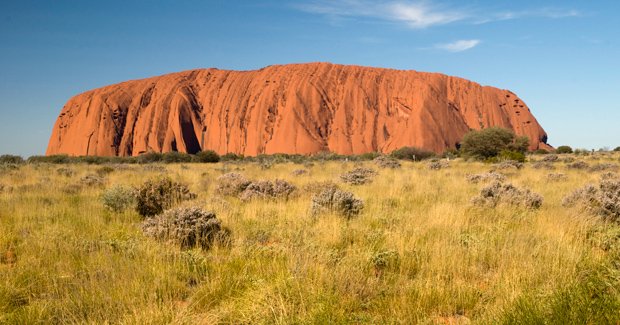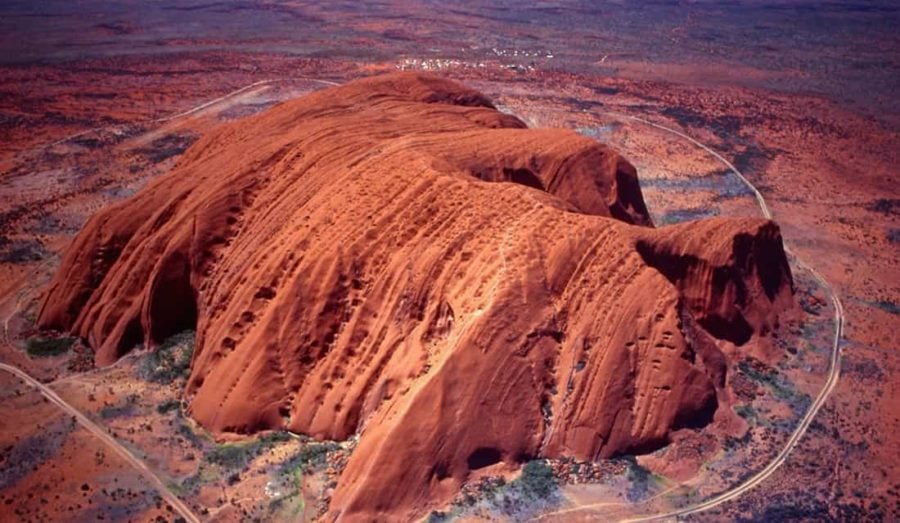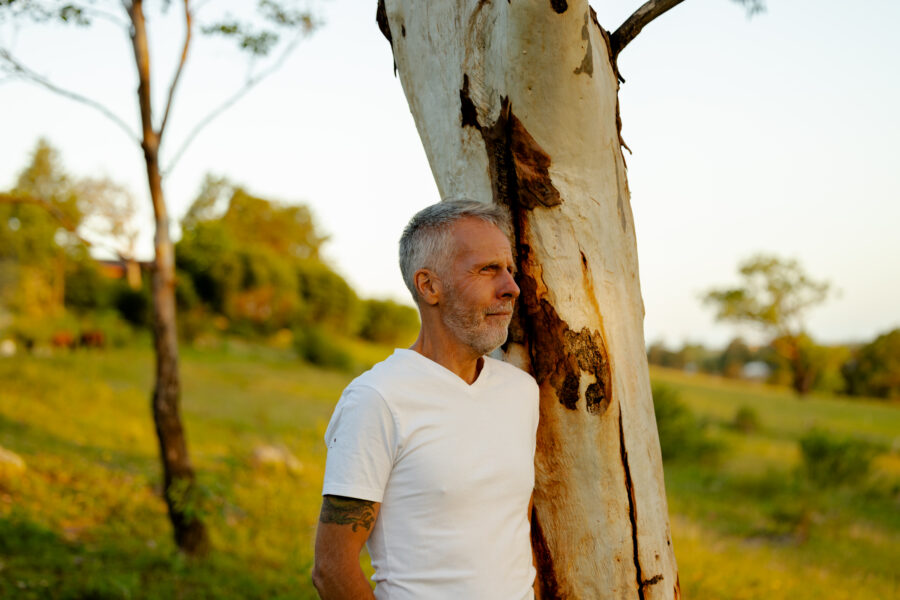Uluru handback remembered, 40 years on

On 26 October 1985 the Anangu received the title deeds for Uluru-Kata Tjuta National Park in a landmark ceremony held at the base of Uluru. It marked the end of a lengthy lobbying campaign by Traditional Owners to receive recognition for their land rights. For at least 30,000 years, the Anangu – a language group comprising several groups in the Western Desert cultural bloc – have lived in Australia’s Red Centre, caring for Country. Achieving legal recognition for their land rights was a fight decades in the making.
After European settlement, the area that’s now Uluru-Kata Tjuta NP was spared from pastoralism because of its unsuitability for agriculture. From 1920 to the 1940s it was an Aboriginal reserve named the South-Western or Petermann Reserve. Its isolation meant few non-Aboriginal people had visited the area, apart from the odd adventurer and mineral prospector. But in 1948 the federal government – recognising the area’s tourism potential – built the first dirt road to Uluru. Two years later, it gazetted the then-named Ayers Rock National Park, designating it as Crown Land. Tourism boomed.
The Anangu did not help manage the park in its early years. In fact, many were discouraged from visiting it. Over the next few decades, sacred sites were desecrated and impacted by tourists. Dozens of people died attempting to climb Uluru – despite the ‘safety chain’ installed in 1966 – and their foot traffic eroded parts of the monolith’s surface. Visitors nearly trampled local shield shrimps to extinction and left behind rubbish that ended up in waterways.
In the 1960s, the Aboriginal land rights movement gained momentum with watershed events such as the Yirrkala bark petitions and Wave Hill Walk-Off, the latter of which would go on to influence the Aboriginal Land Rights (Northern Territory) Act in 1976. This landmark legislation recognised First Nations land ownership and allowed mobs to claim land rights if they could prove traditional association.
Uluru-Kata Tjuta NP’s status as Crown Land meant it was ineligible for a land rights claim. Traditional Owners, Pitjantjatjara Council and the Central Land Council began lobbying then-prime minister Malcolm Fraser and his government for the legislation to be amended so they could claim land rights as Traditional Owners. Meanwhile, the NT Government – having achieved self-government in 1978 – wanted the park’s title to be transferred into its jurisdiction, and snubbed the lobbyists’ efforts.
The deadlock ended in November 1983 when Bob Hawke’s newly elected government announced the national park’s title would be transferred back to the Anangu. At the official handback ceremony, which took place nearly two years later, Traditional Owners signed an agreement to lease the park back to the Australian Parks and Wildlife Service (the disgruntled NT Government chose to withdraw from all management arrangements). A board – chaired by Yami Lester and with a majority of Anangu members – was founded to manage the park. The park is still jointly managed by the Anangu and Parks Australia.






